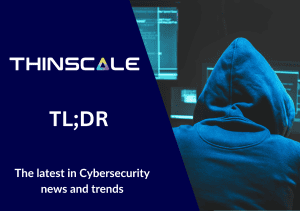With this new normal of work at home, we are still figuring out how to emulate an agent’s office environment. Agent supervision and productivity control are key aspects that have been lost in this transition to remote working. In this blog, we will be going through productivity management issues that work at home has introduced and how employers can fix this.
Control of applications & browsing
The first thing the employer may think they need to do is monitor all employee activity to catch their employees out and deter them from accessing non-work-related resources. While there are many solutions for this, an often overlooked factor when talking about productivity is productivity control. I.e., ensuring agents cannot access websites or applications outside of their workplace requirement. This is both for fundamental security reasons and ensuring employee productivity. When providing devices to employees, nothing stops them from ignoring their work and watching a show or browsing the internet during their shift. Companies need to:
- Ensure their employees are only accessing approved resources on their machines during work hours
- Be able to dynamically change what resources are accessible based on customer requirement
This is where solutions that lock down the agent devices are ideal, as the employer can dictate the workplace applications to be allowed to run on the device while denying access to everything else.
Agent activity reporting
In this modern environment, we do not have the luxury of supervisors and other team members monitoring agent activity. Without this deterrent, how can the employer know if agents are working throughout the day? This is part of why we have seen several employee monitoring solutions surge in popularity this year. While you can debate the amount of information needed on employee activity, employers, at the bare minimum, should be able to see three things:
- When agents are signing in
- When they are launching workplace applications
- When they are logging off.
As mentioned, some solutions can provide the above (and much more); they are not always necessary. Auditing like above can be done by good central management systems that often come free with most endpoint lockdown solutions.
Ensuring agent freedom
This may sound counter-intuitive compared to what we were speaking about a few moments ago, but this is the reality. Recent studies have shown that employees require separation between their work and private life – the productivity we see with work from home comes at a cost, and burnout for agents can drastically reduce work efficacy. While there is some responsibility on the agent’s part to monitor themselves, there are some things employers can do:
- Ensure consistent work hours are followed, no more, no less
- Limit communication outside of work hours
- Ensure agents personal machines remain “personal,” not extensions of the company’s corporate machines
By ensuring agents are not working themselves into the ground, employers can enjoy the consistent benefits that work at home has been shown to offer in terms of productivity.
Secure Remote Worker
So as an employer, you can deploy policies and network protocols to control corporate resource access to a limited degree, purchase a subscription to one of the many agent monitoring tools available, and encourage HR to communicate that agents should make efforts to separate their work and personal life. Or you could simply download Secure Remote Worker. Secure Remote Worker is a Windows application that converts agents’ personal machines into secure, PCI DSS compliant, WaH ready endpoints. How does it solve the previously stated issues?
- Control applications & browsing: Secure Remote Worker has total control over access to any application/website when active. Agents are unable to launch non-work-related resources while using Secure Remote Worker.
- Agent activity reporting: Secure Remote Worker allows all agent machines to be monitored. When active, Secure Remote Worker will log any action performed by agents automatically. Employers and IT can also perform in-depth auditing of device activity and status at any time.
- Ensuring agent freedom: The key phrase you’ll notice in the past two points is, “When active.” Because Secure Remote Worker does not convert these personal machines permanently. Secure Remote Worker allows agents to log in and out of their secure workplace, removing all corporate resources access and returning them to their personal session. This clinical separation between workspace and personal machine means that agents maintain their privacy when not working while still allowing employers to maintain complete visibility and control during working hours.
Conclusion
Remote working has been an overall success story; that said, it has led to some productivity management complications. Productivity control and monitoring and avoiding employee burnout, are vital for companies navigating this new normal. Through software solutions, like Secure Remote Worker, the productivity of agents working from home is ensured.



